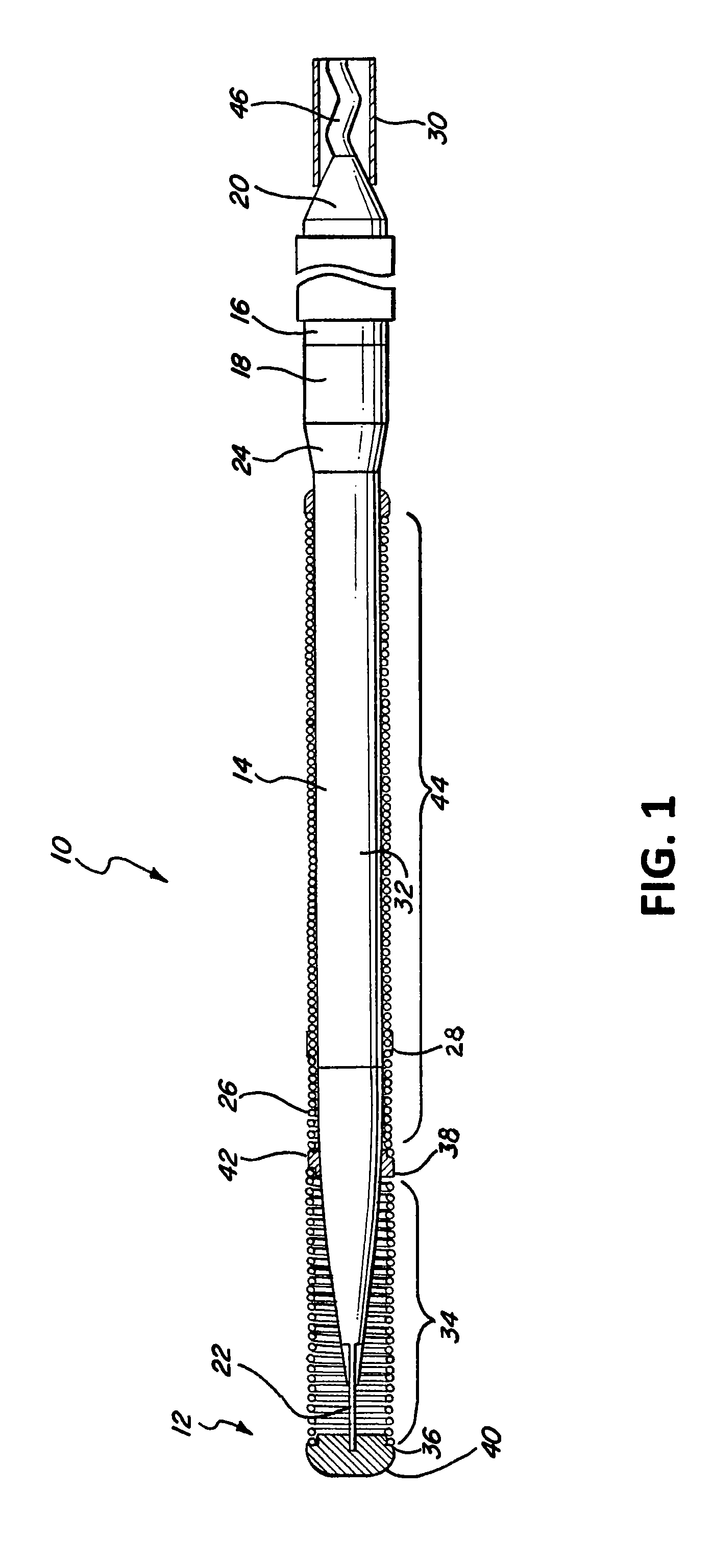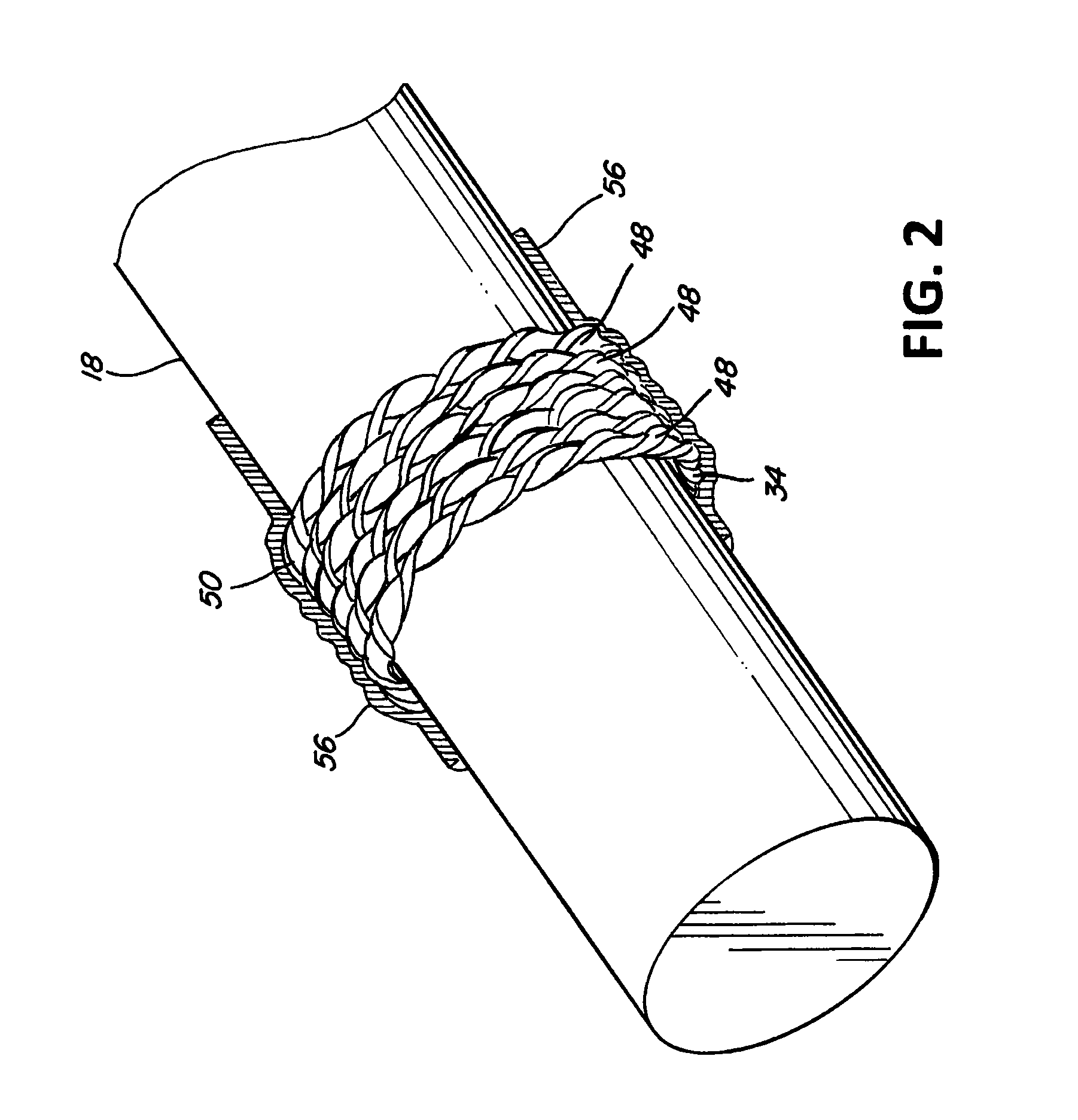Twisted ribbon wire guidewire coil
a technology of guidewires and ribbon wires, applied in the field of medical guidewires, can solve problems such as difficult to achieve characteristics, and achieve the effects of strong coils, high value and usefulness, and precise feedback
- Summary
- Abstract
- Description
- Claims
- Application Information
AI Technical Summary
Benefits of technology
Problems solved by technology
Method used
Image
Examples
Embodiment Construction
[0022]In FIG. 1, a guidewire 10 with a distal tip 12 is shown which has features of a preferred embodiment of the present invention. The guidewire 10 has an elongate core 14 with a proximal core section 16 and a distal core section 18. The proximal core section 16 terminates proximally in a proximal end 20, and the distal end terminates in a distal end 22. The distal end 22 preferably has a substantially round cross-section, but in the embodiment shown, is flattened and is malleable in order to facilitate shaping of the distal tip of the guidewire 10 by the user. The proximal core section 16 of the elongate core member 14 can have an outer diameter of about 0.017 inch (0.4 mm) to about 0.030 inch (0.8 mm), but preferably has an outer diameter of about 0.020 inch (0.5 mm) to about 0.027 inch (0.7 mm).
[0023]The elongate core 14 may be formed of stainless steel, specifically 304V stainless steel, pseudoelastic or superelastic nickel-titanium (NiTi) alloys, or combinations thereof such ...
PUM
| Property | Measurement | Unit |
|---|---|---|
| outer diameter | aaaaa | aaaaa |
| outer diameter | aaaaa | aaaaa |
| thickness | aaaaa | aaaaa |
Abstract
Description
Claims
Application Information
 Login to View More
Login to View More - R&D
- Intellectual Property
- Life Sciences
- Materials
- Tech Scout
- Unparalleled Data Quality
- Higher Quality Content
- 60% Fewer Hallucinations
Browse by: Latest US Patents, China's latest patents, Technical Efficacy Thesaurus, Application Domain, Technology Topic, Popular Technical Reports.
© 2025 PatSnap. All rights reserved.Legal|Privacy policy|Modern Slavery Act Transparency Statement|Sitemap|About US| Contact US: help@patsnap.com



